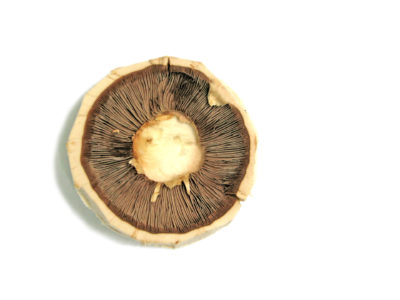It’s difficult to write about an entire food group in a concise way, but this page refers entirely to culinary mushrooms. Overall, mushrooms refers to the spore-bearing, fruiting body of a fungus. Edible mushrooms are used throughout the world, most notably in Asian cuisine, and have been consumed by humans for thousands of years. Most commercially-available mushrooms are grown on farms, but many can actually be harvested in the wild (as I write about in my post, Wild Edibles: Superfoods in Your Own Backyard). Because of their rich umami flavor and incredible nutrition, I have included mushrooms in many of my recipes:
- Herbed Chicken Savory Crepes with Wild Mushroom “Cream” Sauce
- Rabbit and Wild Mushroom Stew
- Sausage and Mushroom Frittata
- Stir-fried Turnip Greens with Mushrooms and Almonds
- Spanish Picadillo
- Eggplant and Wild Mushroom Stuffing
Mushrooms are incredibly nutritious, to the point where they’re being studied for their potential medical benefit! In 100g of mushroom, there is more than 20% of RDV of vitamins B2, B3, and B5 as well as some phosphorus, potassium, and zinc. As one might expect, however, there is a great variety of nutrition according to the different types, with wild mushrooms having the most diversity of vitamins, minerals, and phytonutrients.
I suggest trying many different mushrooms to develop a taste for them and decide which is your favorite! There are a variety available at most grocery stores as well as some farmers’ markets.


 Almonds
Almonds